Overview of USA's release vehicles in LEGO format: Instructions for all models are free in PDF format.
The story started in July 2023 when I learned that LEGO published its former magazine Explorer's issue 03/2023 (unfortunately it has been discontinued since the end of July 2023). Attached to it was Polybag 11976 (Spaceship), which immediately caught our attention (my LEGO and space travel buddy Ralph and myself as the author of this article).
Comparing the assembled LEGO polybag 11976 spaceship (left image) with the original (middle image) and the LEGO designer's descriptions, “The important thing for me is that the tank and solid rocket launchers can be removed. A real spaceship. “The tank needs to be securely attached while playing, but easy to remove without destroying the rest of the model” is the reason for modifying or expanding the space shuttle according to our ideas.
After successfully executing this (right image), we came up with the idea that we could also build the SLS rockets (Block 1 and Block 1B) at the same scale (approx. 1:510).
We have both MOD/MOC on English language website Collection point (Forum Space Collectibles – Models & Toys) was published. On December 30, 2023, founder and editor Robert Perlman said: “I love them, Harold! It would be great to complete a complete series of US launchers of this style/size.”
As this is a good idea, the next step is to check whether these launch vehicles can be implemented in such a small scale using LEGO bricks. Conclusion: All launch vehicles can be built this way, although due to the small size, some parts cannot be accurately mapped. However, the launchers can be identified.
It's amazing that a small and interesting LEGO polybag is the beginning of such a story. After two reports on the LEGO Polybag 11976 Space Shuttle already published here, a third report now follows. At the moment, astronauts or their shelters (capsules or space stations) are about all of the United States' launch vehicles carried into space for their respective missions.
With general notes
» First, the proportions must be modeled to some degree, which is what happens with existing Lego bricks.
Given size is always easy and sometimes impossible.
» The basic shape is also important, i.e. curves or other shapes are implemented. On such a scale it is
It also makes sense to avoid details.
» If possible, colors should also be adopted from the original.
» In these building instructions, we provide suggestions on how to build America's missile vehicles with Lego bricks.
» Additionally, used LEGO bricks are shown here for purchase.
» Stones are used in available colors that are not in the desired color. Single people
Stones are described in detail in the building instructions. Anyone interested decides for themselves how to proceed with this.
The same applies to the tagging topic, as the volume is so small that we have omitted to provide recommendations here.
to do
» Construction instructions contain information about launchers, colors and markings.
» Wherever possible, markings are made using Lego bricks.
» For non-perceived signs and texts, the construction instructions contain descriptions and links to images that provide sufficient information.
Show up well and therefore be an aid to decision-making.
Your own ideas can be implemented at any time. That's what LEGO is all about.
Here are the personal launchers!
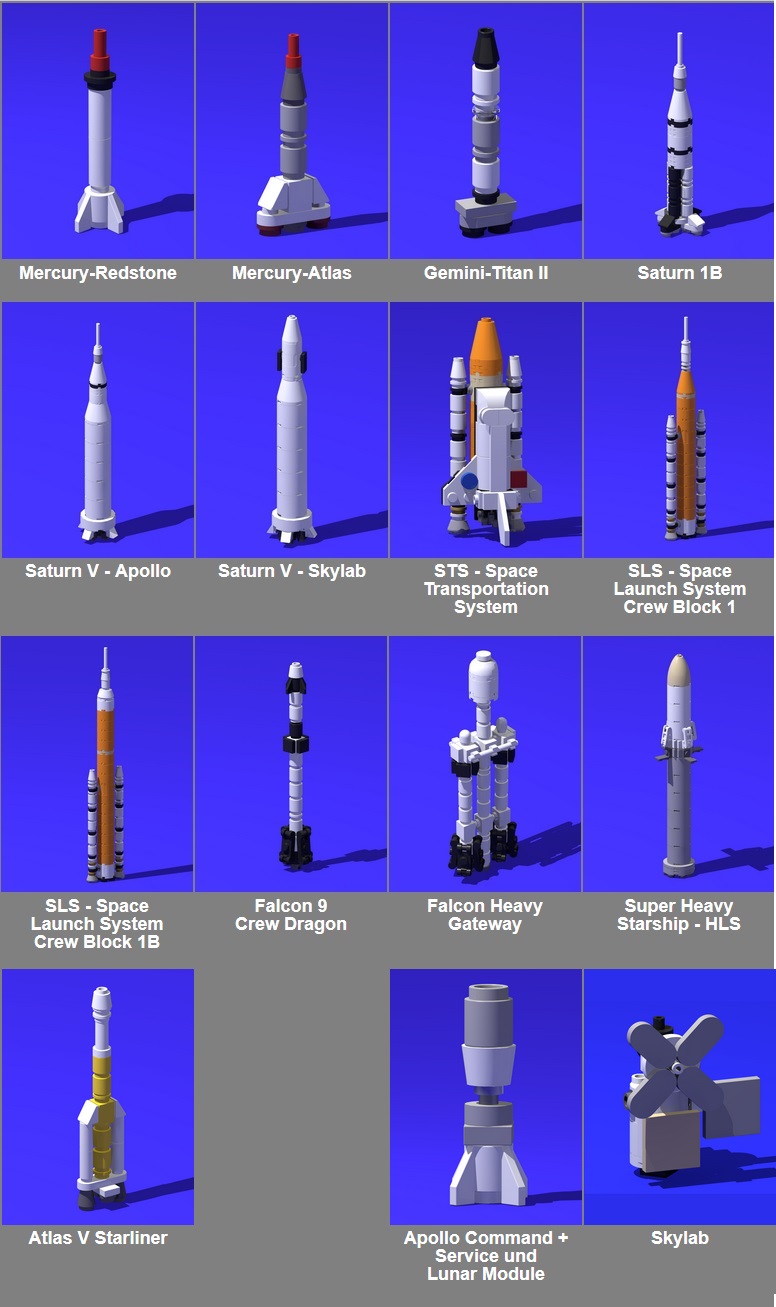
Mercury Redstone (MR)
——————————————–
Mercury Atlas (MA)
——————————————–
Gemini Titan II
——————————————–
Saturn 1B
——————————————–
Shani v
——————————————–
STSSpace
Transportation
system
——————————————–
SLSSpace
Boot system
Group Module1
——————————————–
SLSSpace
Boot system
Crew Black1 b
——————————————–
Falcon 9 Crew Dragon
——————————————–
Falcon Heavy Gateway
——————————————–
MR-3 – MR-4 (1961)
————————————————————
MA-6 – MA-9 (1962-1963)
————————————————————
Gemini III – Gemini XII (1965-1966)
————————————————————–
Apollo 7 – 1968
Skylab 2 (1973) – Skylab 4 (1974)
ASTP (Apollo Soyuz Test Program –
Joint flight with
USSR – 1975)
————————————————————–
Apollo 8 (1968) – Apollo 17 (1972)
Skylab 1 (Space Station 1973-1979)
————————————————————–
STS-1 (1981) – STS-135 (2011)
————————————————————–
Artemis I (2022). Artemis II (planned
2025) and Artemis III (planned for 2026).
————————————————————–
Artemis 4 (scheduled for 2028) and
More tasks
————————————————————–
SpaceX-DM2 (2020), SpaceX Crew 1 (2020) –
SpaceX Crew-7 (2023) and other private ones
Flights (2021+2022+2023+2024).
————————————————————–
Flights to build the Gateway Space Station
Around the moon.
————————————————————–
Boe-CFT (test flight, scheduled for 2024) Atlas V Starliner
——————————————–
Super heavy
Starship HLS
(Human landing system
– Lunar Lander)
And 6 more missions to the ISS
————————————————————–
For Artemis III and IV
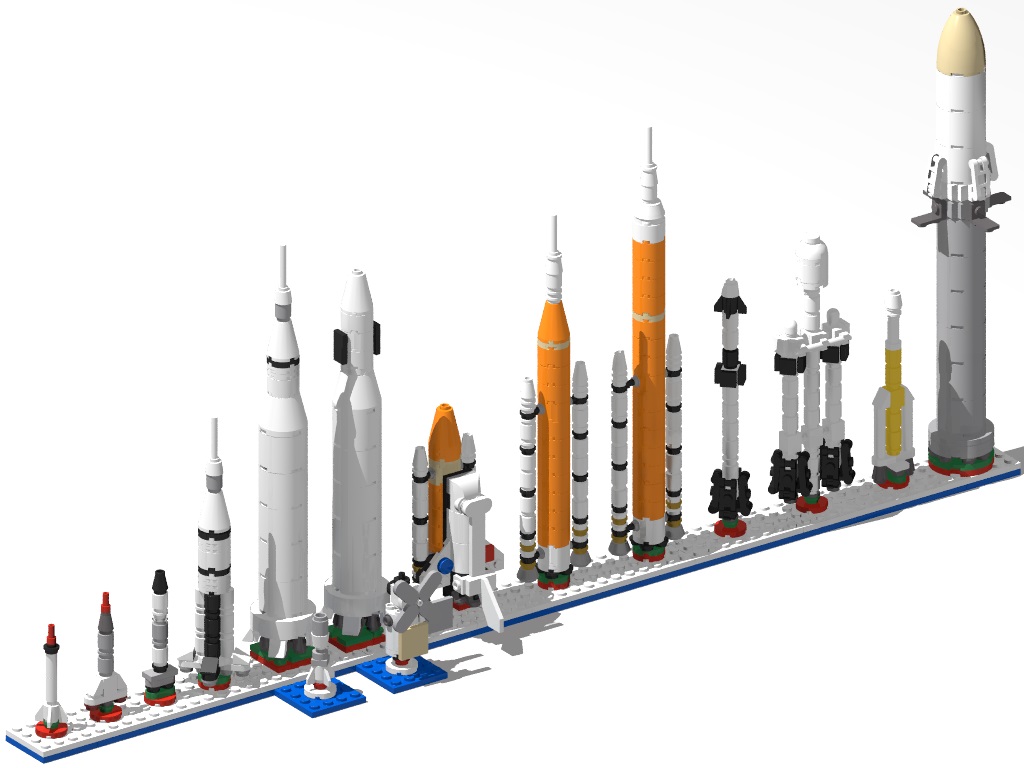
Dimensions are in cm
Height 24.8
Depth 7.8
Width 57.9
The number of different stones is 135
Total stones are 696
Instructions as a PDF download
As always, the following files are free.
» Construction instructions for all launchers 💾
» xml file with all required gems 💾
If you are interested in individual launchers, here is the relevant file:
» Mercury Redstone 💾
» Mercury Atlas 💾
» Gemini Titan II 💾
» Saturn 1B 💾
» Saturn V-Apollo 💾
» Saturn V – Skylab 💾
» STS – Space Transport System 💾
» SLS – Space Launch System – Crew Module 1 💾
» SLS – Space Launch System – Crew Block 1B 💾
» Falcon 9 Crew Dragon 💾
» Falcon Heavy – Gateway 💾
» Atlas V – Starliner 💾
» Super Heavy – Starship HLS 💾
» Apollo Command + Service Module + Lunar Module 💾
» Skylab 💾
your opinion!
What is your favorite launch vehicle? Have you ever tried building a rocket out of Lego bricks? Feel free to comment in the comments.

“Amateur coffee fan. Travel guru. Subtly charming zombie maven. Incurable reader. Web fanatic.”






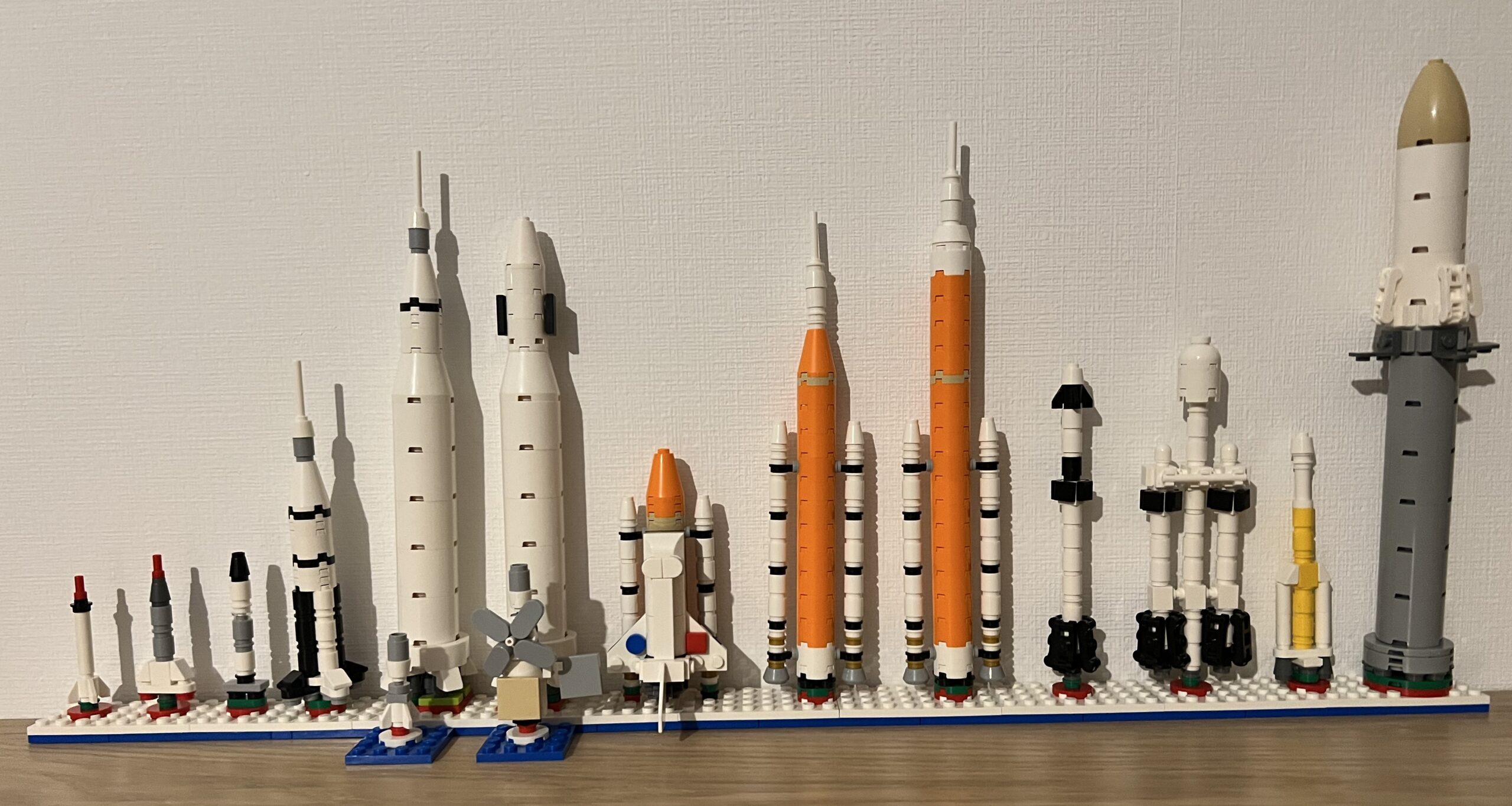
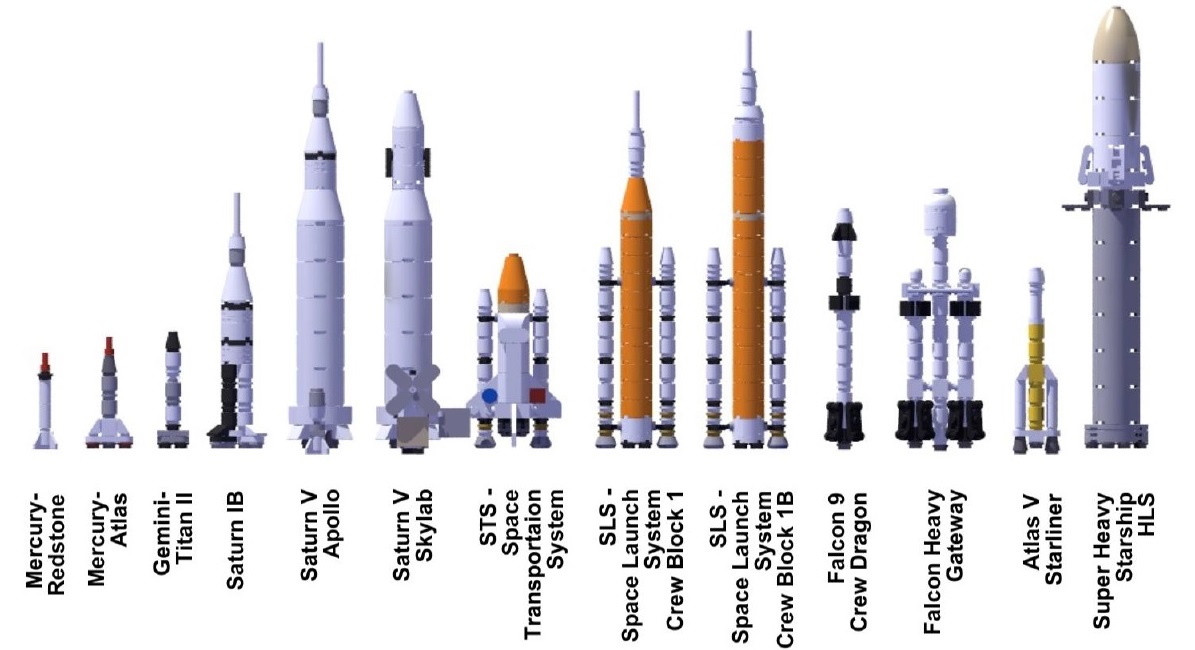
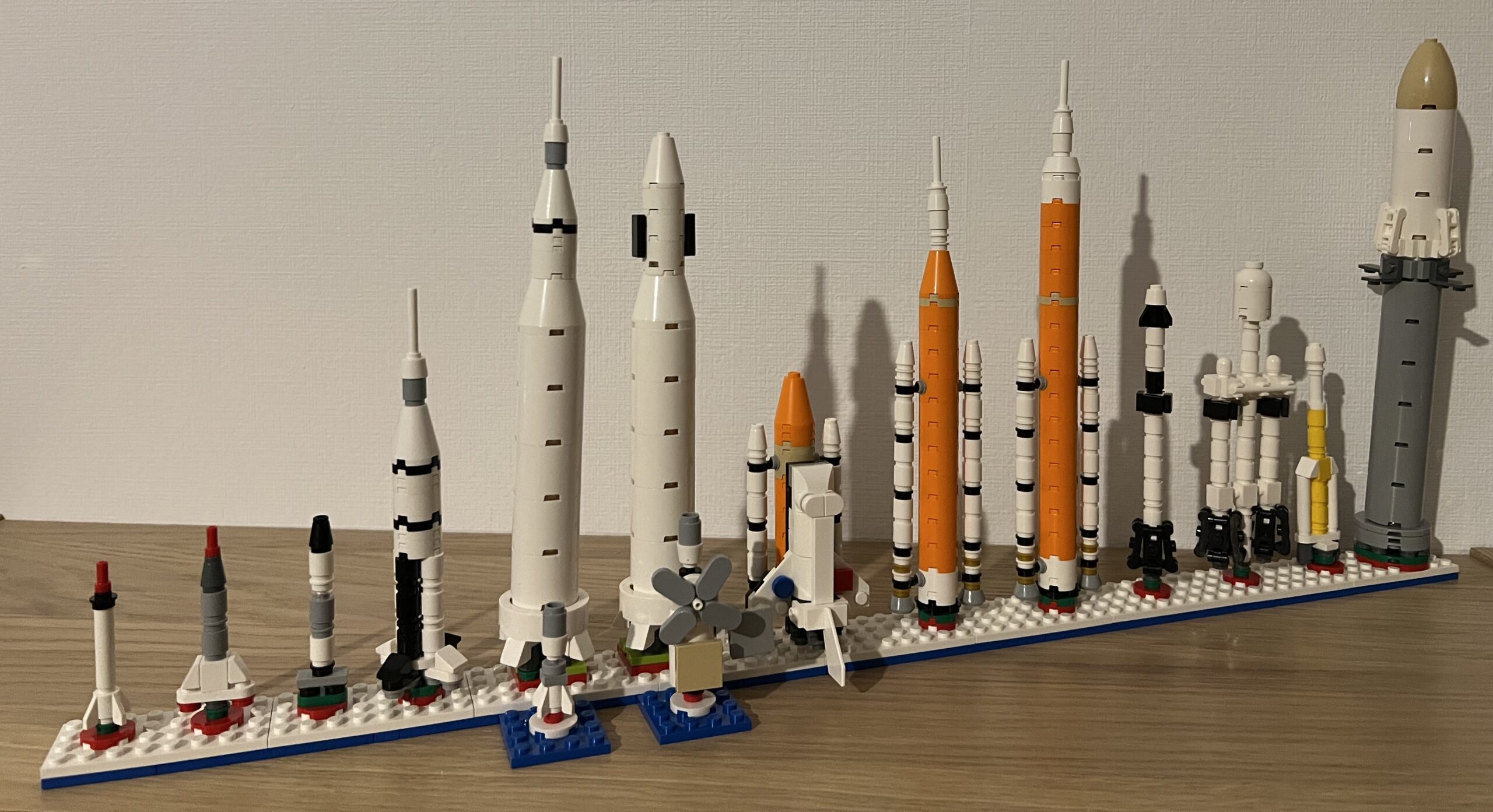
More Stories
Oil prices give gains on US inflation worries
Mercedes can breathe a sigh of relief over emissions scandal
Nebraska and Iowa: Severe Tornado Damage in US